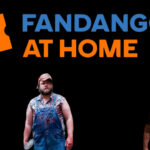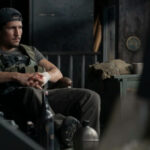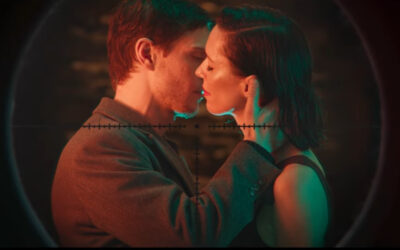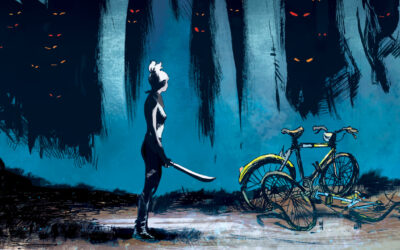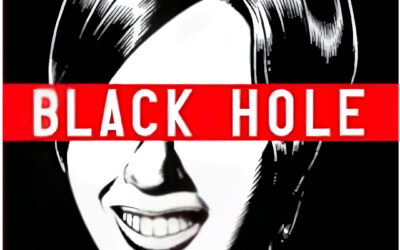In the ever-evolving world of comic books, one genre has experienced a chilling resurgence that captivates both long-time fans and new readers alike: horror. The dark and macabre themes, combined with the unique storytelling capabilities of graphic novels, create a powerful medium for delivering spine-tingling tales. Unlike traditional horror literature or films, horror graphic novels offer a blend of visual and narrative elements that immerse readers in a visceral, haunting experience. In this article, we will explore the evolution of horror in comics, the characteristics that make a horror graphic novel truly effective, and some of the most notable new titles that are redefining the genre.
Early Horror Comics
Overview of Classic Horror Comics from the Mid-20th Century
The mid-20th century marked a golden era for horror comics, a time when the genre flourished with eerie tales and macabre imagery. These early horror comics laid the foundation for what would become a rich and enduring genre slot in the comic book industry. Publishers like EC Comics were at the forefront, with titles that captivated and terrified readers.
Notable Titles and Their Impact on the Genre
“Tales from the Crypt” (1950-1955)
Publisher: EC Comics
Description: One of the most iconic horror comic series, “Tales from the Crypt” featured a collection of short horror stories introduced by the Crypt-Keeper. The stories ranged from supernatural occurrences to psychological horror, each with a twist ending.
Impact: This title set a high standard for horror storytelling in comics, influencing countless creators and becoming a cultural touchstone that extended into television and film adaptations.
“The Haunt of Fear” (1950-1954)
Publisher: EC Comics
Description: Alongside “Tales from the Crypt,” “The Haunt of Fear” was another cornerstone of EC’s horror line. It was known for its gruesome tales and haunting artwork, hosted by the Old Witch.
Impact: The series helped solidify the anthology format in horror comics, providing a platform for diverse and innovative horror stories.
“House of Mystery” (1951-1983)
Publisher: DC Comics
Description: Initially a science fiction and supernatural anthology, “House of Mystery” transitioned to focus more on horror. It became known for its chilling tales and gothic art style.
Impact: The longevity of “House of Mystery” demonstrated the sustained popularity of horror comics and influenced DC’s future horror and supernatural titles.
“Chamber of Chills” (1951-1954)
Publisher: Harvey Comics
Description: Known for its lurid covers and shocking stories, “Chamber of Chills” featured a mix of supernatural and horror themes, often pushing the boundaries of what was acceptable at the time.
Impact: The series contributed to the growing concern over comic book content, eventually leading to the establishment of the Comics Code Authority.
Modern Horror Graphic Novels
Transition from Classic Horror to Contemporary Graphic Novels
The journey of horror in comics has undergone significant transformation from its early days to the present. Classic horror comics, emerging in the mid-20th century, laid the groundwork with their straightforward storytelling, often centered around supernatural entities, gruesome monsters, and moral tales. These early works, while groundbreaking, were often constrained by the era’s social and political climates, leading to censorship and simplified narratives.
Key Differences in Themes, Art Styles, and Storytelling Techniques
Themes
Modern horror graphic novels delve into a wide array of themes that go beyond the traditional scares. While classic horror often focuses on external threats such as monsters and ghosts, contemporary horror explores internal fears and psychological horrors. Themes such as mental illness, existential dread, societal decay, and personal trauma are prevalent. This shift allows for more relatable and profound storytelling, as the horrors are often rooted in real-world issues and human experiences.
Additionally, modern horror often incorporates elements of speculative fiction, blending genres like science fiction, fantasy, and noir. This rolet online genre-melding creates rich, unpredictable narratives that keep readers engaged and constantly on edge.
Art Styles
The art in modern horror graphic novels is notably diverse and experimental compared to their predecessors. Classic horror comics were characterized by their bold, often exaggerated illustrations, designed to shock and thrill. In contrast, contemporary horror artists employ a variety of styles, ranging from hyper-realistic to abstract, to evoke different emotional responses.
Modern horror art often emphasizes atmosphere and mood over explicit gore. Techniques such as shadow play, muted color palettes, and intricate line work are used to create an unsettling ambiance. The visual storytelling in contemporary horror graphic novels is meticulously crafted to enhance the narrative’s psychological impact, making the fear more immersive and lingering.
Storytelling Techniques
The storytelling techniques in modern horror graphic novels have become increasingly sophisticated and layered. Classic horror comics typically follow a linear, plot-driven structure with clear beginnings, climaxes, and resolutions. Modern horror, however, often employs non-linear narratives, fragmented timelines, and unreliable narrators. These techniques add complexity and depth, requiring readers to piece together the story actively, which heightens engagement and suspense.
Character development is another crucial element that has evolved. In contemporary horror, characters are often deeply developed with rich backstories and psychological depth. This development allows readers to form stronger connections with the characters, making their fears and experiences more impactful.
Characteristics of Effective Horror Graphic Novels
Visual Storytelling
Importance of Artwork in Creating Atmosphere and Tension
The visual aspect of horror graphic novels plays a crucial role in building atmosphere and generating tension. The artwork serves as the first point of engagement for the reader, instantly conveying the mood of the story through imagery. The use of shadow, light, and color can evoke feelings of dread and unease, creating a visually immersive experience that words alone might not achieve.
- Shadow and Light: Masterful use of shadows can obscure details, leaving much to the imagination and heightening the sense of mystery and fear. Contrasting light and dark areas within panels can create dramatic tension, emphasizing the horror elements.
- Color Palette: A limited and strategic color palette can reinforce the eerie and unsettling tone of a story. Desaturated colors, stark blacks, and blood-red highlights often dominate horror graphic novels, contributing to the overall sense of dread.
- Panel Layout and Composition: Innovative panel layouts can manipulate pacing and suspense. For instance, smaller, cramped panels can convey a sense of claustrophobia, while larger, more expansive panels can provide shocking reveals or establish an ominous setting.
Examples of Illustrators Who Excel in Horror
Certain illustrators are renowned for their ability to bring horror stories to life through their distinctive styles. These artists often have a knack for detail and an understanding of how to visually represent fear.
- Atmospheric Detail: Illustrators who excel in horror often pay close attention to the small, unsettling details that contribute to the overall atmosphere. This might include decaying environments, grotesque creatures, or haunting facial expressions.
- Dynamic and Expressive Art: The ability to capture intense emotions and physicality in characters is crucial. Expressions of terror, madness, or malevolence are often exaggerated to amplify the horror effect.
- Innovative Visual Effects: The use of unconventional techniques such as mixed media, digital manipulation, or surrealistic art styles can enhance the horror experience, making it more visceral and unsettling.
Narrative Techniques
Story Elements that Enhance Horror
The narrative structure and techniques used in horror graphic novels are essential to their effectiveness. These elements work in tandem with the visuals to create a compelling and frightening experience.
- Pacing: Effective pacing is critical in horror. Slow, deliberate pacing can build suspense and anticipation, while sudden shifts can deliver shocks and surprises. The rhythm of the story must keep readers on edge, oscillating between tension and release.
- Plot Twists: Unexpected plot twists can heighten the sense of unpredictability and fear. These twists often subvert expectations, leading readers into false security before delivering a startling revelation.
- Psychological Depth: Exploring the psychological dimensions of characters adds layers to the horror. Characters’ internal struggles, fears, and obsessions can be as terrifying as external threats. This psychological depth can make the horror more relatable and impactful.
Comparison with Traditional Horror Literature and Film
Horror graphic novels occupy a unique space in the spaceman slot horror genre, combining elements of traditional literature and film while offering distinct advantages.
- Literary Techniques: Like traditional horror literature, graphic novels can delve deeply into character development and intricate plotting. However, the addition of visual elements allows for more immediate and visceral storytelling.
- Cinematic Qualities: Horror graphic novels borrow heavily from cinematic techniques, such as framing, visual pacing, and jump scares. Visual storytelling can emulate the dynamic shots and special effects found in horror films.
- Immersive Experience: The combination of text and imagery in graphic novels creates a more immersive experience compared to traditional literature. Readers engage with both the narrative and the visuals simultaneously, making the horror more immediate and tangible.
- Control over Pace: Unlike film, where pacing is controlled by the director, graphic novels allow readers to control their own pace. This control can intensify the reading experience, as readers can linger on disturbing images or quickly turn pages to escape the tension.
The Appeal of Horror Graphic Novels
Engaging a New Audience
Horror graphic novels have a unique ability to attract both die-hard comic fans and dedicated horror enthusiasts, bridging the gap between two vibrant communities.
- Fusion of Visual and Literary Elements: Horror graphic novels combine the visual intensity of art with the depth of storytelling. This blend appeals to comic fans who appreciate the artistic craftsmanship of comics and horror enthusiasts who seek spine-chilling narratives.
- Diverse Art Styles: The versatility of art styles—ranging from hyper-realistic to abstract—caters to different tastes within the comic and horror communities. Graphic novels like “Wytches” by Scott Snyder and Jock use dark, gritty visuals to enhance the eerie atmosphere, while others like “Through the Woods” by Emily Carroll use a more stylized, fairy-tale approach to horror.
- Accessible Format: Graphic novels are often more accessible than traditional novels due to their visual nature. This accessibility invites readers who might be intimidated by text-heavy books but are eager to experience horror stories.
- Engaging Storytelling Techniques: The episodic nature of many graphic novels can create cliffhangers and suspense, much like horror TV series, which keeps readers hooked. The visual format allows for creative storytelling techniques, such as the use of color to signify danger or tension, and panel layouts that control pacing and build suspense.
- Community and Fandom: Both comic and horror genres have dedicated fan bases. Horror graphic novels create a crossover appeal, fostering community engagement through conventions, online forums, and social media platforms where fans can discuss and recommend their favorite titles.
Psychological and Emotional Impact
Horror graphic novels resonate deeply with readers, offering a psychological and emotional experience that is distinct from other media forms.
- Immersive Experience: The combination of visuals and text in horror graphic novels creates an immersive experience. The artwork can evoke visceral reactions, while the narrative builds psychological tension. This dual engagement enhances the emotional impact of the story.
- Exploration of Deep-Rooted Fears: Horror, by nature, delves into primal fears and anxieties. Graphic novels often explore themes like isolation, the unknown, and the supernatural, tapping into universal human fears. The visual element can make these themes more immediate and intense, as readers see the horrors unfold before their eyes.
- Emotional Catharsis: Experiencing fear in a controlled environment, such as through a horror graphic novel, can provide emotional catharsis. Readers confront their fears and anxieties within the safety of fiction, which can be both thrilling and relieving.
- Relatable Characters and Situations: Many horror graphic novels feature characters and situations that readers can relate to, despite the supernatural elements. This relatability can heighten the emotional stakes, as readers empathize with characters facing terrifying circumstances.
- Visual Symbolism: Artists in horror graphic novels often use visual symbolism to add layers of meaning to the story. This can create a deeper psychological engagement, as readers interpret the symbols and their implications within the narrative. For example, the recurring imagery of decaying structures might symbolize the protagonist’s mental state or the inevitability of death.
- Pacing and Tension: The pacing in horror graphic novels is carefully controlled through panel layouts and page turns. Sudden reveals, close-ups of horrifying details, and the strategic use of silence (empty panels or wordless sequences) can create intense moments of suspense and fear.
- Unique Visual Horror: The graphic novel format allows for unique visual horror that might be difficult to achieve in film or prose. Distorted perspectives, surreal landscapes, and grotesque creatures can be depicted in ways that are both imaginative and terrifying.
Conclusion
Horror graphic novels have carved out a unique niche in the world of comics and horror literature, offering a compelling blend of visual and narrative elements that engage and terrify. By appealing to both comic fans and horror enthusiasts, these graphic novels create a crossover audience that appreciates the artistic and storytelling craftsmanship involved. The psychological and emotional impact of horror graphic novels is profound, providing readers with an immersive and cathartic experience that delves into deep-rooted fears and anxieties.


